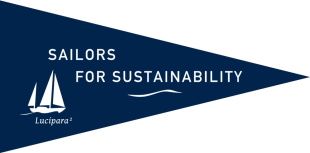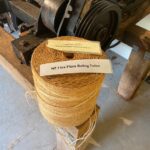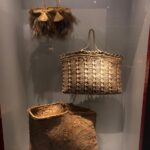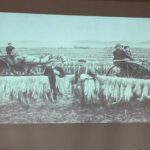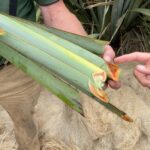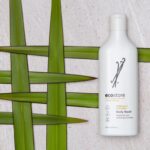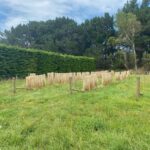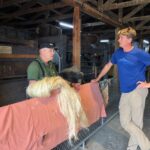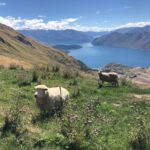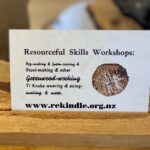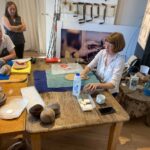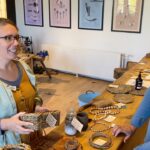Circular Materials (NZL)
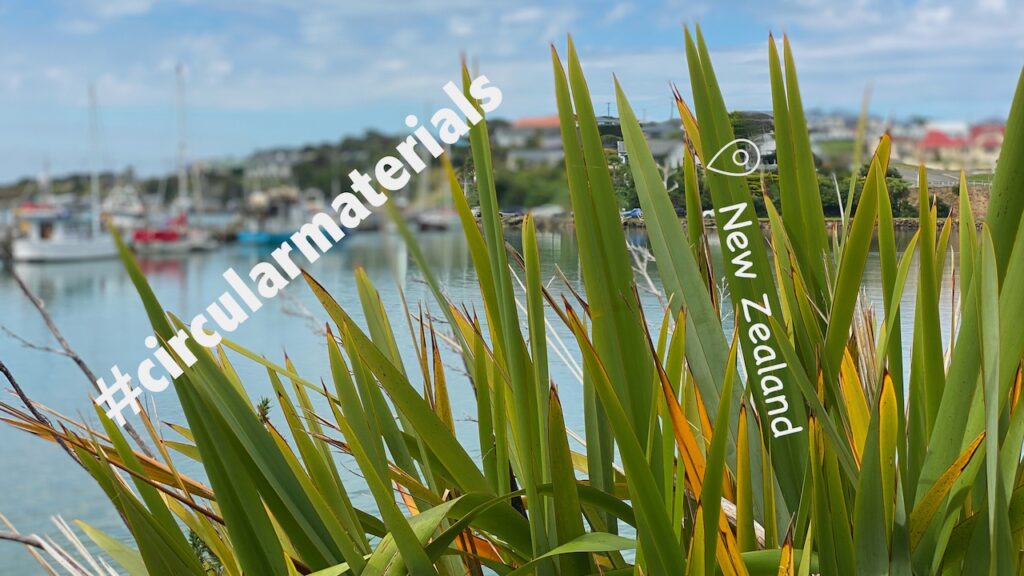
Waste does not exist in nature. Which circular materials can we use instead of plastic, so we can reduce human-produced waste?
Contributes to achieving the following UN Sustainable Development Goals:
Pollution has been a constant companion on our travels around the world. Even in the sparsely populated south of New Zealand, we encounter human-produced waste, such as plastic. It disintegrates into small pieces but never breaks down, instead lasting for ever. After we pick it up and put in a rubbish bin, chances are it will go to a landfill. We are just moving the pollution. By contrast, in nature, there is no such thing as waste. All organic material is circular: it eventually breaks down and is reused as food for animals or nutrients for the soil.
So why do we humans make such a mess of it? It has gotten to the point where pieces of plastic are found in cow’s milk, beer, honey, even human placentas. If we used more biodegradable, circular materials, we would be doing both nature and ourselves a favour. It’s high time we investigate which circular and natural alternatives to plastic are available in New Zealand!
Natural Used to Be the Norm
We come across it in each local history museum we visit: New Zealand flax, or harakeke. For centuries, the Māori have been making garments, baskets, and works of art with the long leaves of this native, widespread plant. The European settlers used flax mills to extract fibres from the leaves. The strong rope that was spun from these fibres was in demand worldwide for use in shipping and agriculture, for example to tie bales of hay together. As a result, the plant’s fibres became the country’s main export product. Once they could no longer be used, they would simply biodegrade. It was a versatile and circular product.
Today, only one flax mill is left in New Zealand. It is located in Riverton, close to Invercargill, the country’s southernmost city. At the mill, we meet Vaughan Templeton. He manages his family’s mill, which these days mainly serves as a museum. Vaughan shows us the machines which extracted the fibres from the leaves and a video with them in action. He then takes us to the plants that grow behind the mill. “When the settlers arrived, the fibres reminded them of European flax, which is used to make linen. That’s why they called the plant ‘flax’, although New Zealand flax is a very different plant”, he explains. “The fibres are much coarser, too, so it not so suitable for fine textile, but very much so for ropes.”
He cuts off the outer leaves with a sharp knife. They are big and stiff. “The harvest was incredibly labour-intensive, which contributed to the demise of the industry in the 1970s”, Vaughan explains. “My father had to close the mill because labour costs became too high. At the same time, plastics were on the rise”, Vaughan adds. “I still get requests for the fibre, so I turn on the mill sometimes. Some people recognize that it is a great product”, he says. “And biodegradable”, we add in unison. “Exactly” Vaughan nods. “Look at the amount of plastic that is now used in agriculture, such as for baling hay. It’s so polluting.” To think that there is a perfectly fine, circular alternative out there makes it even more tragic.
Time for a Revival?
In the old days, a renewable, circular material such as harakeke was the most natural thing in the world. Isn’t it high time to give this natural, versatile, and circular material a second chance, we ask Vaughan? “Of course! Harakeke fibres can replace synthetic fibres and can be used for ropes, mats, and baskets. Harakeke grows everywhere, so there is plenty of raw material around”, Vaughan responds. “I recently got a call from an organic oyster farmer. He and his customers don’t want any plastic around the oysters, so he asked if I could supply rope made of harakeke. It told him that I could, but the price cannot compete with natural fibres from overseas such as sisal.” It seems that labour costs still impede a revival.
According to Vaughan, it would help if not just the plant’s fibres were used, but other parts as well. That would make the harvest of the leaves and the processing of the fibres economically viable. “There is a kind of gel in the leaves”, Vaughan explains while he squeezes a freshly cut leave. Indeed, a transparent, thick liquid comes out. “It could be used in soap and cosmetics, just like aloe vera”, Vaughan imagines. “And cows love the green matter that remains of the leaves after the gel and fibres have been removed”, Vaughan adds.
Multifunctional, natural, and zero waste – we can’t think of a more circular raw material than harakeke. It makes us wonder if an entrepreneur is working on using harakeke to the fullest?
Discovery in the Shower
Not much later we find the answer in an unexpected place. “You won’t believe this!” Ivar shouts from under the shower at our campsite. “My shower gel contains harakeke!” He uses liquid body wash from Ecostore. It is a New Zealand manufacturer of ecological personal care and cleaning products. On their website we read that the Māori inspired Ecostore to use harakeke. In Māori traditional medicine, the the cool, clear gel is used to heal burns, cuts, and skin infections. The Māori even consumed it to treat diarrhoea.
Ecostore has found that the gel has a moisturizing effect and is packed with natural nutrients for the skin. “I see opportunities”, Floris smiles. “If more companies use the gel, the extraction of the fibres could become economically attractive. The residual product can be given to life stock, so less animal feed would need to be imported.” Let’s hope it will be scaled up, so more circular materials are used instead of synthetics!
Warm with Wool
The next stop on our quest for circular materials leads us to New Zealand’s second largest city, Christchurch. A gigantic billboard promoting merino wool gives us both a flashback to 2012. “My first present!” Floris laughs. Ivar gave Floris thermal underwear made of merino wool as a gift when they first met. It had to help convince Floris to go sailing in winter. Now, years later, we are at the source of Floris’s beloved undergarments. But how circular and sustainable is merino wool?
We put our question to New Zealand Merino, the country’s largest supplier of merino wool. Tim Loftus is their sales and marketing manager and warmly welcomes us. “Merino wool is naturally renewable and biodegradable, so that’s a huge advantage over synthetic fibres”, he starts. The material itself is circular, we understand, but how sustainable is sheep farming? “Merino sheep do particularly well in the rugged highlands. It means that very little land is needed that could be used for growing food instead”, Tim explains.
That’s an important difference with traditional sheep farming. All over New Zealand, land has been cleared for sheep farming. Where native forests once stood, green pastures dominate the landscape. Sheep were prolific in New Zealand, as wool was once one of the country’s main export products. Yet pastures cannot absorb as much CO2 as forests, they are not as biodiverse as forests, and excessive deforestation can lead to land erosion. Those are some of the environmental hazards of wool. Still, they are not the reason why (non-merino) wool is no longer a significant material in New Zealand farming. The costs for shearing sheep are high, whereas the price for wool is very low, having fallen from NZD 6 per kg to less than NZD 2 in the last decade.
Tim recognises that there are also concerns when it comes to the treatment of animals. “That’s why we work together with our sheep farmers to produce merino wool in a more animal and nature-friendly way” he explains. New Zealand Merino helps farmers to achieve high standards relating to animal welfare, environmental impact, and social responsibility. Growers who meet those standards can get a sustainability accreditation (ZQ). Growers who go a step further and use regenerative farming methods, for example by restoring waterways, offsetting carbon, or protecting native species, can earn the ZQRX accreditation. Those accreditations not only help buyers make a sustainability-based choice when they source merino wool, they also help reduce the negative sides of wool production. Of course, sustainable wool production is a process, and not every farm moves at the same speed. Yet there are other advantages of wool fibres over synthetic fibres. The latter are often oil-based, meaning they are the product of a very polluting supply chain. “Wool clothes lasts a long time”, Floris comments. “I still wear my merino undergarments with great pleasure”, he smiles. It’s also good to know that no microplastics end up in our waterways when washing woollen clothes, contrary to synthetic materials such as fleece.
Making It Yourself
Ivar still has some doubts. “Merino wool is a beautiful product, but isn’t it a pity that it travels from New Zealand all over the world to the cheapest production location? Could that be done differently?” he wonders. Rekindle seems to have found a solution for this. The organization runs resourceful skills workshops in Christchurch’s Arts Centre. Participants learn to make utensils such as baskets, coasters, cutlery, clothing, and furniture from natural materials such as harakeke, wood, and wool. “Instead of buying stuff, we try to encourage ingenuity and self-reliance”, director Hannah Wilson tells us. “What could be more fun than crafting something yourself from natural and circular materials?”
We get an opportunity to attend one of the workshops, Making Felt Slippers. Step-by-step, workshop leader Simone Bensdorp explains to the participants how to make slippers from New Zealand wool. When we return at the end of the afternoon, the participants have nearly finished crafting their own slippers. Not only do they take home warm slippers, but they have also gained the knowledge how to make their own products with local wool.
Sea of Possibilities
New Zealand’s past reveals its long tradition of using circular materials, like harakeke and wool. While these days, harakeke is only used on a small scale, we see a sea of possibilities for the versatile fibre, its gel, and leftovers. It would be great if more companies followed Ecostore’s example, so harvesting the leaves would become economically viable and the fibres could replace plastics. Merino wool, by contrast, has become well-established (and well-loved) in the clothing industry. While these are well-known New Zealand circular materials, all over the world Mother Nature offers renewable materials such as wood, cork, hemp, or bamboo. These circular materials can help us reduce the amount of plastic waste. If they are processed locally, that saves a lot of transport, too. The only question therefore is: which natural, circular materials will you use instead of plastic?
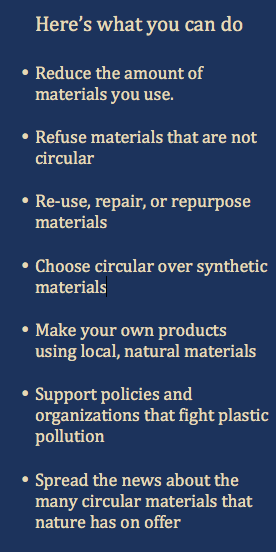
Related Sustainable Solutions

Minimalism (USA)
In the land of (over)consumption, we meet a mom who promotes minimalism. She explains how decluttering and buying less leads to more happiness.

Circular Materials (NZL)
Waste does not exist in nature. Which circular materials can we use instead of plastic, so we can reduce human-produced waste?

Food Recue (NZL)
We meet organisations that lead the way in reducing food waste and learn that all of us have a responsibility to tackle this global challenge.

Fair Fashion (ALB)
In Albania, we meet Pitupi, which makes “people-to-people”clothing. Environmental and social values are as least as important as financial profit.

Local Currency (ITA)
We sail to Sardinia to visit the local currency Sardex. Could this be a more sustainable monetary alternative suitable to support a circular economy?

Mondragon Cooperatives (ESP)
At Mondragon, employees are owners, salaries and profits are fairly distributed, there is solidarity among cooperatives, and education is held in high esteem.
